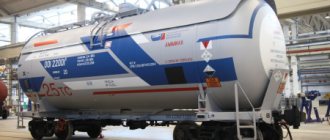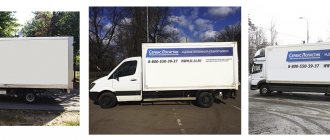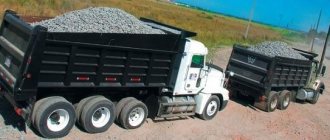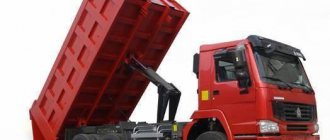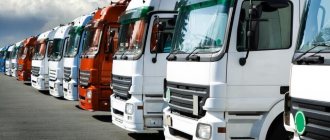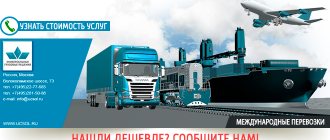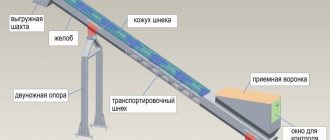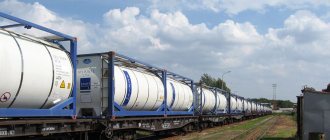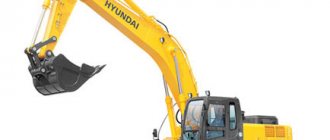In 2022, logistics and forwarding companies use different types of freight transport to transport goods, and almost every type of vehicle is used to solve its own, unique problems. Specialists approach the selection of such equipment as carefully as possible, because the safety of inventory items sent along the routes directly depends on how correct their decision is. Competent and careful purchase of a car is not only the good will of those responsible, but also legal regulations. For example, on the territory of Russia, there are a number of law enforcement regulations that provide for liability for carriers who use vehicles for other purposes.
Classification of trucks
It is not difficult to guess that today, in the age of widespread expansion and widespread modernization of the engineering industry, there are hundreds of types of vehicles available for free sale, each with its own set of advantages and disadvantages. Masters (and government officials) created rules to divide all cars into certain groups and classes according to certain characteristics:
- number of axes (biaxial, triaxial, etc.);
- numerical composition (road trains, as well as fifth-wheel and trailer vehicles);
- fuel type (gas, gasoline);
- load capacity (from 0.5 to 16 tons inclusive);
- total weight (1.2-40 t);
- body type (open, closed, special).
Moreover, one vehicle can simultaneously qualify according to several parameters. As an example, as a rule, a two-axle machine is given, weighing about 5 tons and running on an ordinary diesel engine.
Types and types of freight transport in logistics
In the realities of the modern logistics industry, a car used to transport all kinds of goods is almost the most common and sought-after tool. Even if, for example, railway rolling stock and sea tankers are involved, vehicles transport inventory items to the place of unloading operations. It is this factor that determines the extremely wide variety of models of equipment used in the activities of current forwarders.
Important Terms
To understand the term “carrying capacity”, several more concepts related to it are important:
. This is the weight of the car without additional elements (gasoline and other liquids, spare parts, tools necessary for the operation of the equipment), driver, passengers, cargo.
Dry weight- Curb weight (in PTS it is designated as “weight without load”). This is the weight of the vehicle with all the components that ensure its performance.
This includes fuel, antifreeze, other liquid components, spare parts, and tools necessary to maintain functionality. In some European countries, the curb weight also includes the weight of the driver, because without it the car cannot be driven.
- Gross weight (in the PTS it is written “permitted maximum weight”). This is the weight of the car when it is refueled, there is a driver, passengers, cargo, and luggage in it. To calculate the indicator, the manufacturer uses the maximum permissible pressure on the axle.
By body type
The simplest and most common classification that allows you to divide all vehicles into certain categories.
Onboard
A platform fenced on the sides with impressive folding sides. They have one particularly important advantage - ease of loading. The main disadvantage of this type of vehicle is the impossibility of using it for the transit of objects susceptible to negative environmental influences.
Low-bed
An open trailer with no side or rear walls. The main area of use is the transportation of special equipment and other machines. They are endowed with increased load-carrying capacity, and are also equipped with various fastenings, slings and scaffolds that allow you to transport other vehicles onto a substituted pallet.
Platform
Taking into account the information from the previous sections, it can be understood that the classification of freight transport by type and type in most cases is based on the technical equipment of the vehicle itself. This group of vehicles is equipped with a body designed to interact with large objects - industrial machines, construction units, and so on. Unlike ordinary trawls, such modules are not equipped with folding or retractable bridges designed to perform loading operations on board other vehicles.
Manufactured goods
Vehicles used to solve problems of transit of goods that do not require specialized temperature conditions, but at the same time require one hundred percent protection from environmental influences. Bodyworks are made, for example, from metal, plastic or wood.
Tent
The most popular and most widespread vehicle groups. They are equipped with a removable frame designed to secure an ordinary awning. They are used for transporting goods protected from wind, dirt, dust, precipitation, dampness and other things. They can be equipped with a number of additional mechanisms: from swing gates to hydraulic motors on the side.
All metal
Classic vans, found in all more or less developed countries. Designed for transportation of all kinds of inventory items that do not require special protection measures.
Isothermal
Cars whose body modules are sheathed with specialized sheets of heat-insulating metal. It is not difficult to guess that the main area of their use is the delivery of things and products in compliance with a certain temperature regime.
Construction equipment
In the modern classification of vehicles, there is a separate place for machines used exclusively during construction work. Some similar units have a much wider range of possible applications, because they are used, including in logistics.
Reefer van
Vehicles equipped with functional refrigeration units. Despite the fact that such equipment, as a rule, requires high costs in terms of fuel, its prevalence today is extremely high. There are six different classes of refrigerators, divided according to the temperature they maintain.
Special equipment and other vehicles
Trucks with the widest possible range of tasks that can be solved with their help. These include all kinds of timber trucks, snow trucks, garbage trucks, excavators and loaders. They differ from each other both in technical equipment and in the possibility of additional equipment using different equipment.
Open
As mentioned earlier, such bodies are necessary in the case when a company engaged in the transportation of certain objects needs to transport inventory items along the route that do not require special regimes and protection. These could be grain products, iron ores, waste from the coal mining industry, and so on.
Closed
Such cars are equipped with slightly more advanced systems for protecting contents from the influence of a negative environment. As a rule, they are used within the framework of ordinary civil transit, if necessary, for example, the delivery of furniture from one point to another.
Special
A more modernized class of vehicles, which includes a huge number of different vehicles. It is not difficult to guess that all vehicles included in this range are equipped with one or another additional equipment module: from hydraulic lifts to refrigerators and refrigeration units.
Utility minibus
It is simply impossible to answer the question of what kind of transport is considered cargo without mentioning this unit. In addition to transporting various inventory items, it is also capable of taking people on board, thereby solving several problems at once.
"Jumbo"
A similar, purely logistics and forwarding term indicates a vehicle equipped with a tilt semi-trailer with a curved frame. Unlike ordinary vehicles equipped with awnings, it is characterized by large load capacity parameters.
Container ships
It is easy to understand that this category of vehicles is intended exclusively for addressing all kinds of packaged and sealed containers. As a rule, technical means of this kind are used as additional functional force when loading objects, for example, onto railway rolling stock or sea tankers.
Car transporters
Vehicles engaged in dispatching other vehicles. They are equipped with advanced equipment that allows them to lift transit vehicles for loading onto transport platforms. They are found even in ordinary urban environments, in the form of familiar tow trucks.
Timber trucks
It is not difficult to guess that the main purpose of these vehicles is to guide certain forest areas along the route. With their help, wood is delivered, extracted at various specialized enterprises, including on the territory of the Russian Federation.
Tanks
Another type of technology that has an easy to read scope of application due to its name. Such units are used by logistics and forwarding companies to work with liquid substances, as well as objects with a wet fraction.
Platforms and low loaders
As mentioned earlier, such machines are used exclusively in cases where large equipment items become the main inventory items within the current transit. These can be CNC machines, production devices, factory devices of impressive size, and so on.
Single vehicles
Vans that need no introduction. They are found on the territory of any developed countries. They are used to organize transportation around the world, including on the territory of the Russian Federation.
Semi-trailer train
Tractor vehicles, usually driven by specialists called truck drivers. They are characterized by impressive load capacity parameters, as well as the ability to retrofit the vehicle with a huge number of different additional modules. Similar cars are present in the parking space of almost all large specialized forwarding and logistics organizations. Employees of the Tochka-Tochka brand are also able to interact with them at the highest quality level. Our team is the most reliable partner engaged in cargo transportation throughout Russia. Absolutely every representative of the vehicle class listed in the material is well known to all responsible persons working in our corporation.
Trailed road train
An analogue of a saddle design, with the possibility of coupling with additional modules - other parts of trucks and vans. It is not difficult to guess that such devices have a much greater carrying capacity, allowing them to cope with the most impressively sized batches of inventory items.
By number of axes
Any more or less popular modern car can be equipped with two, three, four, five or more axles. Moreover, a huge number of indicators of the transport itself depend on this figure. Regulations in this area are established due to certain government regulations of the country in which cargo transportation takes place. For example, in the Russian Federation, a car with a mass of about 23 tons and an axial pressure of 6.7 tons, by law, moves exclusively along designated routes prepared for such a load.
By fuel type
It’s not hard to guess that another, self-evident method of classifying vehicles for classic cargo transportation is division by the type of fuel material poured into the tank.
Diesel engines
The most popular type of propulsion systems. It has the highest characteristics in terms of performance, as well as fairly low consumption. In addition, the emissions from such vehicles are less toxic compared to other units of other variations.
Gasoline engines
More maneuverable machines that operate with less noise emitted during operation. As a rule, they are used to organize ordinary, intracity transits.
Gas cars
The most economical engine, which, however, is relatively rare on the roads of the Russian Federation. Despite all the advantages, there are very few specialized gas stations in our country, and that is why logistics organizations rarely get involved with the classes of vehicles in question.
Leading manufacturers
Some tractor manufacturers stand out.
| Renault | French manufacturer of cargo and military equipment. Cars of this brand appeared in Russia in 1912. Today the company has opened branches throughout our country in several cities. |
| Next | Brand of the Gorky Automobile Plant. The manufacturing technology of LAWN and GAZelle NEXT allows us to make vehicles with increased load capacity. Currently it is mastering the production of heavier trucks. |
| MAZ | Under the MAZ brand, truck tractors, flatbed vehicles, and chassis for the installation of various special equipment come off the assembly line. In total there are more than 500 models and modifications. |
| Daf | DAF Trucks NV is a Dutch company that produces transport vehicles and is a division of PACCAR. About 10,000 cars have Russian license plates. |
| Scania | A global company that sells trucks in 100 countries. Manufacturing plants are located in Europe, South America, and Asia. |
| man | A subsidiary of Volkswagen AG, one of the leading manufacturers of trucks. MAN recently entered into a deal with the German road transport company DB Schenker, which affected the group's overall sales. |
| Kamaz | The most famous manufacturer of heavy vehicles during the Soviet period. On the international market since 1976. In August 2022, KamAZ opened a subsidiary in Indonesia. |
| Hino | The Japanese company, which produces trucks, has been a division of Toyota Corporation since the 1960s. It produces specialized trucks that are known on the international market. |
| Volvo Group | Cars are used mainly in Europe. The plant produces vehicles of the Volvo, UD, Renault Trucks and Mack, Eicher and Dongfeng Trucks brands. |
| Navistar International Corp | A Fortune 500 organization producing internationally branded commercial and military trucks and restrictive diesel engines, IC vehicles. |
| Dongfeng | Chinese manufacturer of cargo vehicles. The company is successfully developing, merging with other major developers, such as Nissan, Volvo, with the aim of further development and conquering the international market. It produces hybrid trucks that find buyers anywhere in the world. |
| TATA Motors Limited | One of the largest Indian organizations in the automotive industry. Annual sales volume is approximately half a million trucks. |
| Daimler Group | German concern. Manufactures large-capacity vehicles. These are the brands of Mercedes, Freightliner, Detroit Diesel, etc. The brand ranks first in terms of turnover of commercial vehicles in the world. |
By load capacity
It is possible to understand which transport is classified as a freight one, including by its parameters in terms of the weight lifted and transported. In 2022, the automotive industry (and all related areas of factory production) is extremely well developed. Thanks to this state of affairs on the free commercial market, you can find a machine for open sale that satisfies almost any requirement of this segment.
Small (0.5-2 t)
Small two-axle vehicles that easily find their place in intra-city transport. They cope excellently with the transit of furniture, food, household appliances, and so on.
Medium (from 2 to 5 t)
Larger vehicles, as a rule, are used to solve problems of intrastate transportation without taking into account long, extended routes. They are extremely popular due to their excellent maneuverability and economical characteristics.
Large (5-16 t)
Impressive machines, operating also in an international format. They can be equipped with various additional equipment: from hydraulic units to refrigerators and refrigerators.
Special (from 16 t)
Expensive devices used exclusively for long-distance transit. They are characterized by significant carrying capacity, with a fairly strong drawdown for the economic benefit of the entire trip.
Technical condition
When buying a used truck, as in the case of a passenger car, pay attention to its technical condition so that further investments do not bring losses. Experts recommend checking the fuel system of a used truck engine. In addition, it is worth checking the angle of free rotation of the wheels and the body for damage and corrosion.
The speedometer readings of a used car may be skewed in favor of the seller. In general, a mileage of 500 thousand indicates the large resources of the equipment, and with an indicator of over 1 million kilometers, the equipment exhausts its capabilities. Pay attention to the volume of the fuel tank, because the mode of stopping and operation of vehicles depends on it.
The driver's seat should be comfortable. It is especially important to take this into account when operating a car over long distances. When purchasing used equipment, do not forget about its maintenance. Before you choose a car and proceed to purchase, you should research the market for the cost of spare parts, their availability, as well as the level of complexity of repair work.
What are the types of freight transport by gross weight?
Another, extremely simple and literally self-evident classification is the need to divide different types of vehicles according to their weight parameters.
Up to 1.2 t
Small vans and minibuses used in local, regional delivery format.
From 1.2 to 2 t
Classic gazelles with the best properties in terms of load capacity and useful working space.
From 2 to 8 t
Trucks equipped, among other things, with sleeping places in the central cabins. They have a wide range of possible applications.
From 8 to 14 t
Cars that are used to transport inventory items in an international format. As a rule, they are equipped with awnings, all-metal towbars, and so on.
From 14 to 20 t
Two-axle, three-axle and four-axle road trains. They are equipped with large-scale platforms that facilitate loading and unloading operations.
From 20 to 40 t
Saddle car trains, with rolling stock represented by two main parts: a tractor and a semi-trailer.
Over 40 t
The largest, most equipped and extremely expensive devices that address almost any object within long route lines. You can also understand which type of transport is classified as freight by its external characteristics. These are huge, massive machines, from which you can immediately understand that they are involved in classic logistics or forwarding activities.
Let's sum it up
As mentioned earlier, a reliable and truly responsible brand engaged in cargo transportation of any format must be able to handle and create routes involving all popular classes of vehicles. Among the most experienced, equipped and developed companies of this kind is the Russian one. Our specialists not only understand the types of road freight transport, but also know which type of vehicle is suitable for the most economical, fast and safe delivery.
Overload penalty
A fine for a driver transporting more cargo than is allowed in accordance with the vehicle documents is imposed under Part 7 of Article 12.21 of the Administrative Code. He will pay 500 rubles because he violated the following rule:
The weight of the transported cargo and the load distribution along the axles must not exceed the values established by the manufacturer for this vehicle.
A minor penalty doesn't stop some motorists from overloading. And in vain, because a car loaded with more than it can transport obeys the driver less well, does not maneuver quickly enough, and may fall on its side when braking. This is many times greater than the danger of travel for anyone who finds themselves on the same road with such a car.
VIN decoding. Identification (verification) by VIN code
